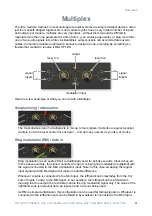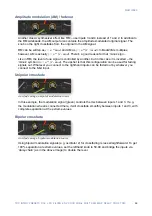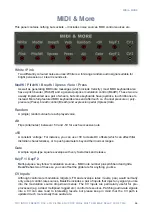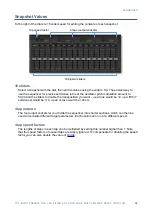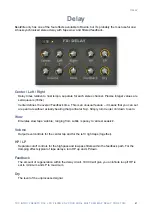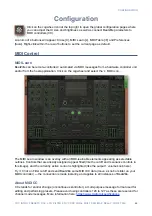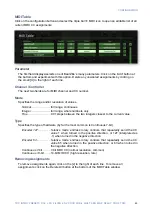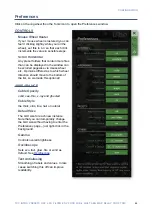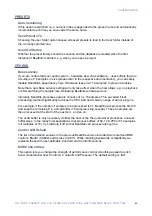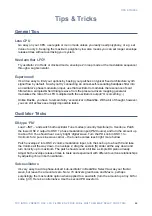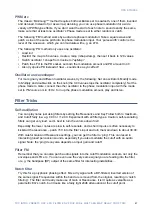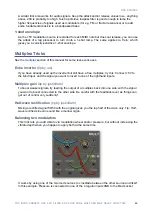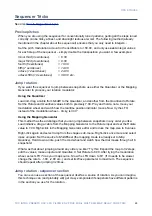
TIPS & TRICKS
Mapping Tricks
2-step maps
Even tiny maps can be useful. For instance, if you want the output of your modulation wheel to
suddenly jump in the middle of its throw, set 2 steps, switch the mode to
Map Quantize
and the
source to
ModWheel
.
12-step maps
To keep key offsets the same in all octaves, select
Key
mode and a 12-step map.
MapGen bit-crusher
(tip by 3ee)
Choose
TapMap
as your oscillator waveform, set the PD value to minimum, right-click the map
and select shapes / triangle (for example). Right-click again and select
quantise 8
... enjoy your
8-bit triangle wave! Also try
make unipolar
, then
Quantize 4
instead. If you want to ‘bit-crush’
regular waves, select the cosine instead of the triangle.
Additive synthesis
(the Spectralize function)
Load
init
, set OSC1 to ‘TapMap’, then right-click in Mapping Generator 1 and select
Reset
.
Right-click again and select e.g. ‘9’. Raise just two or three of the values (e.g. 2, 5 and 9).
Right-click once more and select
Shapes
/
Spectralize…
The
Spectralize
function interprets the map as the levels of partials in the harmonic series and
transforms them into the corresponding waveform!
Processor Tricks
Quantizer bit-crusher
(tip by 3ee)
As well as making control-rate signals steppy, the
Quantizer
can also be used as a ‘bit-crusher’
effect for audio signals. Use low values, but note that 1.00 will generally result in silence.
Quantizer octave transpose
The Quantizer can be used to keep oscillator pitches within a certain range across the entire
keyboard – here’s how: Connect
KeyF 1
to the Quantizer, set the quantization to 4.00. Connect
the Quantizer to a frequency modulation input set to
50 semi
mode, with amount -48.00. An
octave transposition will occur every 16 semitones.
Invert/Lag DC removal
As an alternative to high-pass filtering, you can remove the DC (direct current) component from
a control signal by mixing the original signal with an inverted and lag-processed version of itself.
Double triangle
Rectifying a triangle wave doubles the frequency but doesn’t alter the shape.
Smoother when faster
(trick by 3ee)
If you want your LFO modulation to be smoother and shallower as you increase the speed,
send the LFO (e.g. squarewave) through a Lag Generator and experiment with the attack and
release values.
48

